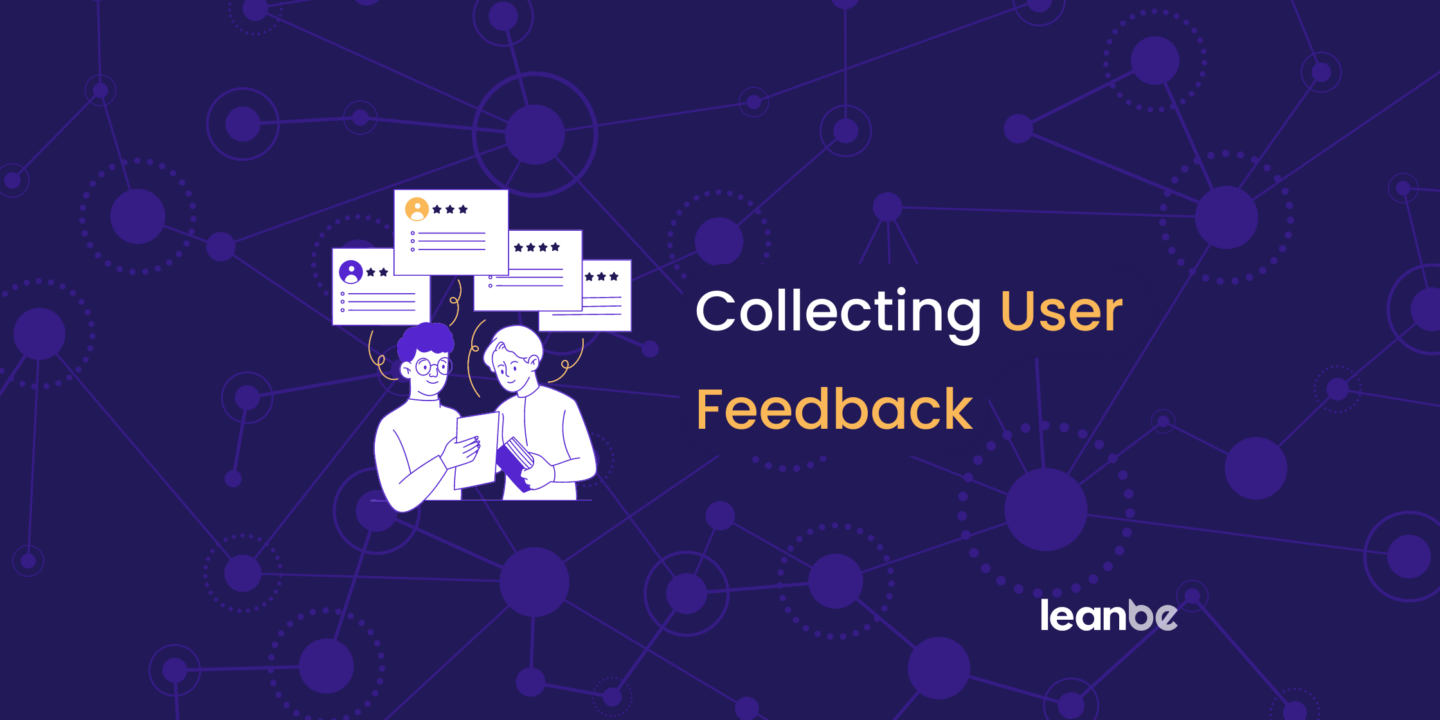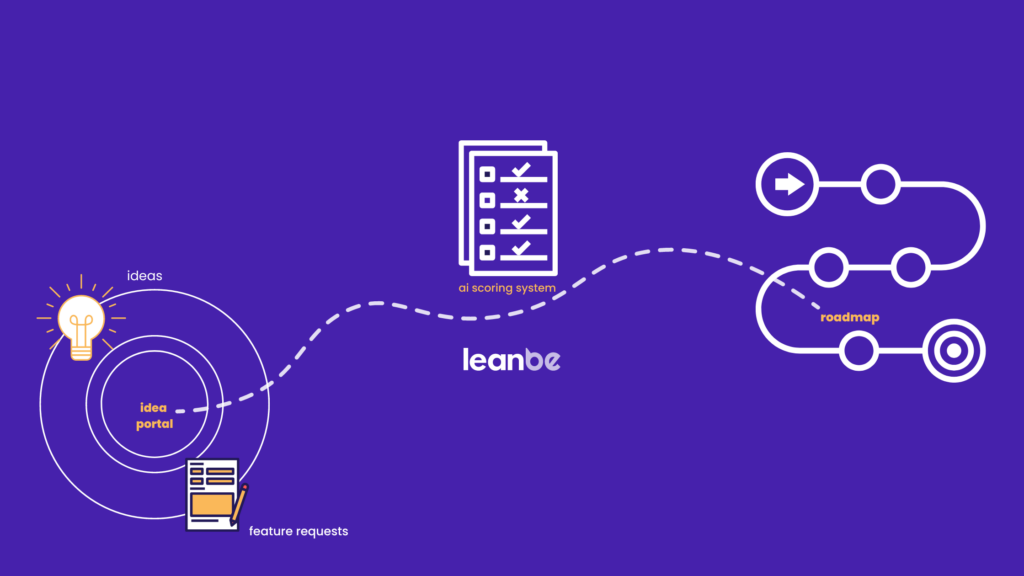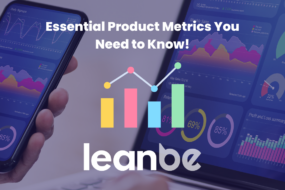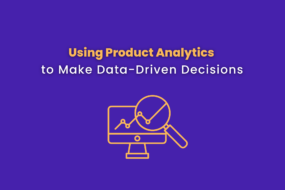

- Home
- Product
- Product Management
- A Practical Guide to Collectin ...
A Practical Guide to Collecting User Feedback
Your users are vital to making your product successful since without them, there would be no business in the first place.
Prioritizing user feedback in your product development journey is about empathy and putting your users first. It’s about recognizing users’ pain points and needs and building products that meet those needs.
Collecting user feedback can identify product strengths and weaknesses. Your users have not known your product as long as you and your team members have. Angry customers can provide insights on how you may fix the problem for others who may have had the same issue.
Analyzing user feedback allows you to meet your customers’ expectations more accurately and efficiently. Thus, you will have a devoted customer base, long-term retention, and, as a result, a more significant share of the market.
But first, you must provide your users with ways to voice their concerns so that you can take action.
What is User Feedback in Product Development?
Any information, good or bad, gathered from users on their experiences using your products or services is considered user feedback.
You can get that information in several ways. You can collect feedback from users either proactively – by asking them for it, or reactively – by getting it from them without requesting it.
When do you Need User Feedback?

User feedback is necessary for all the stages of the product development lifecycle since this process is continuous. Yet, there are occasions when user feedback is incredibly beneficial.
Phases when user feedback is particularly beneficial:
- In the product’s concept stage
When you begin developing, you likely know the market demand your product will fulfill. To test your ideas, interview prospective consumers. You may get more insight to build your vision to get past the idea stage. This process will help you get to the stage of the MVP quicker.
- When you’re prioritizing ideas
Once your product has evolved past the MVP phase, you need to focus your resources on building the most compelling new features and improving the ones you already have. In this stage, you also need a robust feedback management system that does it for you, like good software.
- When building a new feature
When you construct the new features with the highest priority, you will want to collect feedback from your users. The reason is simple: to determine if the way you intend to build those features strongly matches your users’ expectations. Here, your users can help you enhance your features by providing feedback on early wireframes or mockups.
- After users upgrade or downgrade their account
Understanding why a user switches from one plan to another is crucial. You can dive into the factors that made them decide and develop improvements you can make to help them. This can cause strategic and business tweaks that optimize your product development lifecycle.
Defining what you want to discover lets you narrow your research and choose which consumers to interact with.
Different user groups might have quite diverse experiences with your product. Therefore, be clear about who you want to communicate with and what needs you want to address.
When defining your goal in collecting feedback, you should consider the following:
- The priorities of your business.
It’s essential to pinpoint what problems you will solve by collecting user feedback at this stage.
- The priorities of your users.
Your users have goals too, and no other than you must know those. In order to provide value with your features, you must consider what feedback you’re seeking.
Best Customer Feedback Tools
With the best customer feedback tools, you can quickly gather necessary information about your products and services from users.
Some of those tools are:
- Leanbe – to collect feature requests in an idea portal and promote those with higher scores into your roadmap.
- Hotjar – to analyze user behavior via heat maps.
- Typeform – to create forms, surveys, and quizzes.
- CustomerSure – to measure and improve survey deliverability, engagement, etc.
- Usersnap – to conduct event-triggered customer satisfaction surveys and whatnot.
- SurveyMonkey – to calculate Net Promoter Score and customer experience, and capture live feedback.
- Podium – to send SMS campaigns to your users and collect other additional feedback.
Ways to Collect User Feedback
Feedback drives new and innovative ideas. Ultimately, to collect both quantitative and qualitative feedback, you need contemporary methods intertwined with the best practices.
Լet’s analyze all the practical ways to collect user feedback.
Polls and surveys
From the most cost-effective methods, polls can help product managers gather quantitative feedback about customer preferences.
The poll results may be used to prove or disprove an assumption or provide insight into how various demographics of people may feel about your product.
Survey results can transform your hypotheses into facts and validate or invalidate your assumptions.
One-on-one interviews
You can’t go wrong with this type of feedback collection method. This is an opportunity for users to elaborate on why they like/dislike your product. It’s also an opportunity for you to dive deeper into their past and present behavior by asking questions that require explicit answers.
Product analytics
Another excellent method to track user behavior is product analytics. It enables you to examine many data sets simultaneously or focus on individual users. Product analytics can also help you make data-driven decisions as a product manager. We spoke about it in more detail in our recent blog post: “Using Product Analytics to Make Data-Driven Decisions.”
Focus groups and advisory boards
Focus groups interview a small group of potential buyers or customers about their thoughts on your product or service. To provide fair statistics, groups should be demographically diverse.
The interviewees take notes during the interview, and the customers may candidly discuss questions in an interactive session.
Customer advisory boards are usually done with C-level executives who are users of your product or service. They give you insights into your product, how to improve it, what market and industry trends can affect your product-market fit, etc.
Idea portal
User feedback is a valuable source of ideas for product development: ideas such as user pain points, disapprovals, and likes. An idea portal is an interface that helps product managers get objective user feedback. Users submit it as feature requests, ideas, and suggestions on the existing features.

Usability testing
The usability of the product is measured through usability testing. You can do this by asking users to perform specific tasks, then recording their behavior while they do so. It is common to use online tools for this process, hire a professional company, or do it yourself. There are many basic ways to conduct testing: in specific labs with supervisors, session recordings while the process of users testing the site anonymously, remotely and without supervision, by interview/observations, via phone, etc.
To conduct successful usability testing, you will need to:
- Design a prototype
- Develop a test plan
- Recruit people (target users)
- Find a convenient location
- Moderate the test
- Record the test result
Seeing your users use your product will help you notice which parts of your product are intuitive and where people are confused.
After usability testing, you should analyze the results, such as the number of tasks completed, the time taken to complete tasks, the number of errors made, the feedback from testers, and so forth. The analysis will determine if there are improvements you need to make to your product.
Social listening
This method is essential for 2023. In an era where bite-size content represents your whole brand, you also listen to your users on different channels.
Not only can you access honest feedback in the form of direct responses, comments, reviews, or reactions, but also some built-in polling tools.
Final Thoughts
After you gather valuable feedback from users, it’s time to take action and make informed decisions for your business. At Leanbe, we believe that customer feedback is essential, and it can help shift your product strategy for the better.
To start making changes, you first need to analyze the feedback and decide which ideas are more valuable than others.
That is why at Leanbe, we built an AI idea scoring system that allows you to compare and analyze the feedback you already have.
It identifies opportunities for future improvements and prioritizes ideas according to their scores, which you can then include in your public roadmap.
A public roadmap is a visual indicator of the product strategy accessible to your users. It will accurately reflect your company’s current activities, recent releases, and how you shape your product strategy. It’s a unique opportunity to keep your users in touch with the product team.




